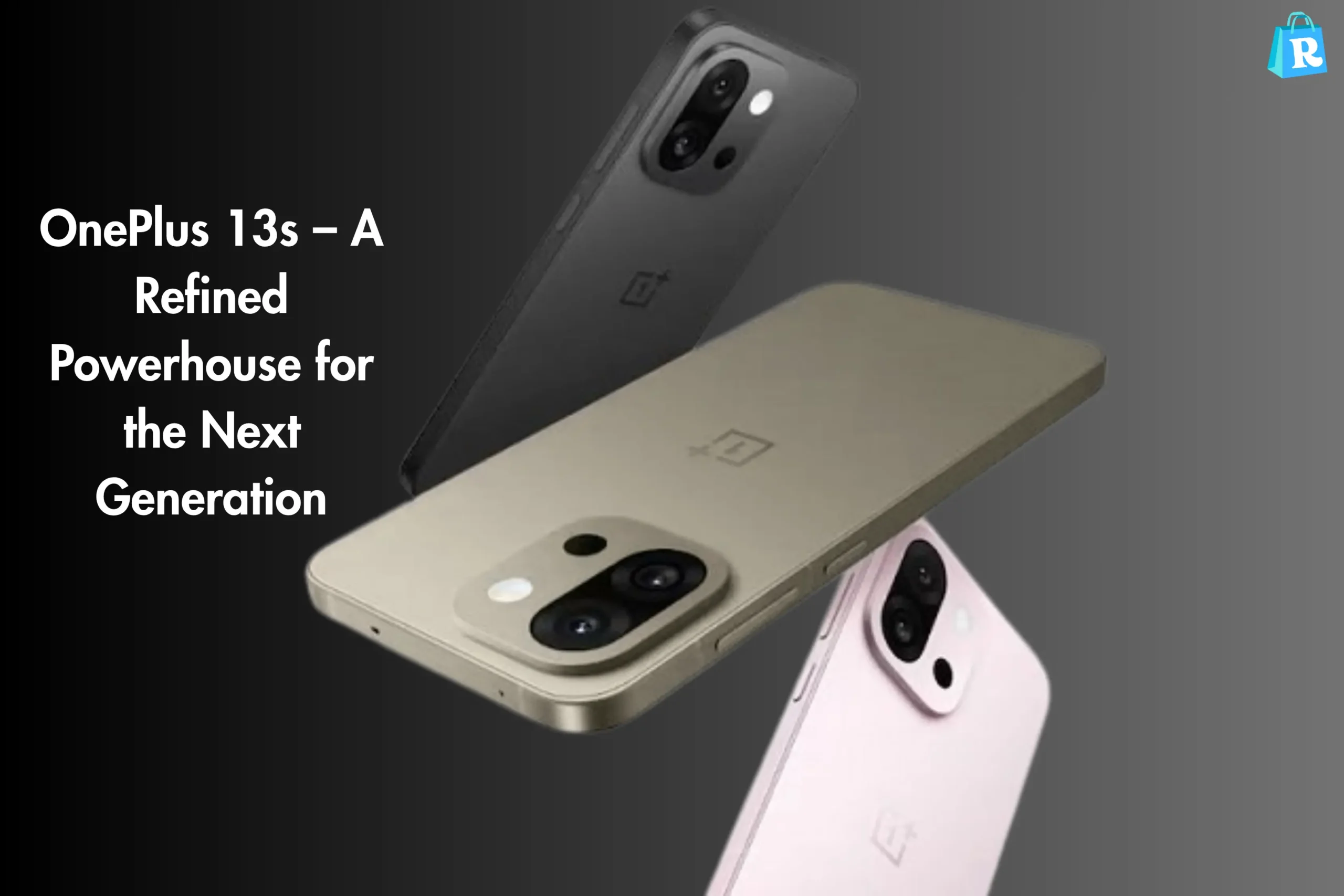The smartphone market is evolving faster than ever, with new models entering the fray seemingly every quarter. Among the many brands competing for attention, OnePlus continues to stand out with its philosophy of delivering flagship-grade features at relatively accessible prices. This time, OnePlus returns with the anticipated OnePlus 13s, following the much-praised OnePlus 13. But what makes this “S” edition different, and is it worth the upgrade?
In this comprehensive comparison, we dive deep into the OnePlus 13s Vs OnePlus 13 debate to uncover the key differences, innovations, and reasons tech enthusiasts are buzzing about the new model. From chipset upgrades to camera refinements and subtle design changes, this blog explores every facet of both devices to help you decide which one might be the better fit for your needs.
Design Language and Build Quality
Both the OnePlus 13 and OnePlus 13s continue the brand’s legacy of delivering sleek and premium designs. While the OnePlus 13 introduced a bold redesign with a refined camera module and textured matte finish, the OnePlus 13s brings slight modifications that enhance ergonomics. The corners feel more rounded, and the weight distribution appears more balanced, offering a comfortable grip for extended use.
Material-wise, the OnePlus 13 used Gorilla Glass Victus 2 on the front and back, paired with a polished aluminum frame. The OnePlus 13s maintains this premium material selection but introduces a frosted back variant that reduces fingerprints and adds a touch of elegance. Color options have also evolved, with the 13s introducing new pastel-inspired finishes.
Display Experience – Brightness and Fluidity
OnePlus is known for its stunning AMOLED panels, and the OnePlus 13s continues this trend. The OnePlus 13 featured a 6.7-inch LTPO AMOLED display with 120Hz refresh rate and HDR10+ support, delivering crisp visuals and smooth animations. The 13s retains the same size and core specifications but boosts brightness levels to 3000 nits peak, compared to 2600 nits on the 13.
This enhanced brightness ensures better readability under direct sunlight and improves overall HDR content quality. Touch response has also seen marginal improvement, particularly in gaming and fast-scrolling scenarios, thanks to refined software optimizations and reduced input latency.
Performance – Powering Up With the Latest Chipset
Performance is often the most scrutinized element in a flagship smartphone. The OnePlus 13 ran on the Qualcomm Snapdragon 8 Gen 3 chip, already a powerhouse capable of handling multitasking, gaming, and intensive productivity tools. The OnePlus 13s, however, introduces a special edition of the Gen 3 chip or a slightly overclocked version (Snapdragon 8 Gen 3+), tuned specifically for performance and battery efficiency.
RAM and storage configurations remain consistent at 12GB/16GB LPDDR5X RAM and UFS 4.0 storage starting from 256GB, but the 13s showcases faster thermal dissipation, maintaining cool temperatures under load. Benchmark tests hint at a 5–7% gain in GPU rendering and CPU performance, offering smoother transitions and fewer throttling episodes in prolonged usage.
Camera System – More Than Just Megapixels
The OnePlus 13 featured a triple camera setup with a 50MP primary sensor, 48MP ultra-wide lens, and a 64MP periscope telephoto camera co-engineered with Hasselblad. The images produced were already top-tier, known for sharpness, color balance, and low-light detail.
With the OnePlus 13s, the primary sensor gets an upgrade in lens coating and image processing algorithms, especially in night mode and HDR environments. While the megapixels remain unchanged, the image quality sees improvements in noise reduction and color consistency. Portrait shots also benefit from enhanced edge detection and more natural skin tones. The front camera on the 13s retains its 32MP sensor but adds wider field-of-view capabilities for group selfies.
Battery Life and Charging Speed
Battery technology in OnePlus devices has been impressive, and the 13s continues to optimize in this area. The OnePlus 13 offered a 5000mAh battery with 100W wired charging and 50W wireless support. The 13s maintains the same capacity and charging specifications but improves overall battery longevity.
Thanks to software tuning and a more efficient chipset, the OnePlus 13s offers slightly better screen-on time, especially in high-refresh-rate modes. OnePlus also introduces a new “AI Charging” feature that learns user habits and reduces overnight charging stress, helping preserve battery health over time.
Software Experience – The Oxygen OS Refinement
OxygenOS is a central part of the OnePlus experience. The OnePlus 13 launched with OxygenOS 14, based on Android 14, providing a fast and clean interface. The 13s takes that further by refining animations, multitasking, and haptic feedback.
While both devices offer similar software features, such as Zen Mode, Private Safe, and Work-Life Balance, the 13s introduces new widgets, lock screen customization, and improved integration with smart home controls. OnePlus also guarantees four years of major Android updates and five years of security patches on both devices, ensuring longevity and relevance.
Audio and Haptics
The OnePlus 13 delivered loud stereo speakers with Dolby Atmos tuning, offering impressive clarity and bass. The 13s enhances this by incorporating an improved spatial audio algorithm that adjusts dynamically based on content. Haptic feedback is also more refined on the 13s, with more granular responses that elevate the typing and gaming experience.
These enhancements, though subtle, contribute to a more immersive experience, particularly when consuming media or engaging in high-action gaming.
Connectivity and Additional Features
Both models support 5G, Wi-Fi 7, Bluetooth 5.3, and NFC. However, the OnePlus 13s introduces a new multi-device connectivity feature allowing seamless switching between OnePlus devices, including tablets and earbuds. The in-display fingerprint scanner remains reliable, with minimal speed differences between the two models.
An interesting addition to the 13s is support for satellite communication in select regions, aimed at emergency SOS use cases. While not mainstream yet, this feature adds a layer of safety in remote areas.
Price and Availability
The OnePlus 13 was competitively priced at launch, and the 13s enters at a slightly higher price point due to the refinements it offers. However, regional pricing may vary depending on configurations and availability. OnePlus continues to offer trade-in and student discount programs, making the 13s accessible for more users.
Early adopters may also benefit from launch offers such as bundled accessories, extended warranty, and cloud storage bonuses. The device is expected to be available in global markets within a few weeks of its official announcement.
Comparison Table: OnePlus 13 Vs OnePlus 13s
| Feature | OnePlus 13 | OnePlus 13s |
|---|---|---|
| Display | 6.7″ LTPO AMOLED, 2600 nits | 6.7″ LTPO AMOLED, 3000 nits |
| Chipset | Snapdragon 8 Gen 3 | Snapdragon 8 Gen 3+ (Tuned) |
| Rear Camera Setup | 50MP + 48MP + 64MP | Same Sensors, Improved Optics |
| Front Camera | 32MP | 32MP, Wider FOV |
| Battery | 5000mAh, 100W Wired | 5000mAh, 100W Wired, AI Charge |
| Software | OxygenOS 14 | OxygenOS 14.1 (Enhanced) |
| Storage Options | Up to 512GB UFS 4.0 | Same |
| Wireless Charging | 50W | 50W |
| Audio | Stereo with Dolby Atmos | Enhanced Spatial Audio |
| Satellite Communication | No | Yes (Selective Regions) |
Key Features
The OnePlus 13s introduces a brighter display for better visibility, refined camera algorithms for clearer photos, and enhanced software customization. It offers a performance-tuned version of the Snapdragon 8 Gen 3 chip and a sleeker body with improved grip. AI-based charging adapts to user habits to extend battery health, while new connectivity features improve device ecosystem integration. Satellite support, though region-specific, adds unique value.
Pros and Cons
- Display brightness has increased, offering improved outdoor visibility.
- Camera performance is enhanced through software rather than new hardware.
- Charging features are adaptive but dependent on user behavior patterns.
- Audio quality receives tuning improvements without new hardware components.
- Satellite communication is present but limited to certain regions.
FAQs
Q1: Is the OnePlus 13s a major upgrade over the OnePlus 13?
The OnePlus 13s is more of a refinement than a revolution. It focuses on improving display brightness, camera processing, and software fluidity while retaining much of the core hardware from the 13.
Q2: Does the OnePlus 13s have better battery life?
Yes, marginally. Thanks to optimized software and a more efficient chipset, the OnePlus 13s delivers slightly better battery longevity and improved charging habits.
Q3: Are the camera sensors different in the 13s?
The sensor hardware remains the same, but the OnePlus 13s introduces better optics and advanced software processing that enhance image clarity, especially in challenging lighting.
Q4: Can I use the same accessories for the OnePlus 13s as I did for the 13?
Yes, most accessories such as chargers, cases, and screen protectors are compatible due to the similar design and dimensions.
Q5: Is the OnePlus 13s suitable for gaming?
Absolutely. With the tuned Snapdragon 8 Gen 3+ chipset and improved thermal management, the 13s delivers a smooth and lag-free gaming experience.
Conclusion
The OnePlus 13s builds upon the solid foundation laid by the OnePlus 13, delivering a collection of refinements that enhance the overall user experience. It does not attempt to reinvent the wheel but rather polishes the edges to create a smoother, faster, and more intelligent smartphone.
From a brighter display and improved software responsiveness to subtle design enhancements and smarter charging behavior, the OnePlus 13s aims to offer just enough new features to tempt both new buyers and existing users looking for an upgrade. It remains a strong contender in the flagship category, showcasing OnePlus’s ability to evolve without compromising its core identity.





